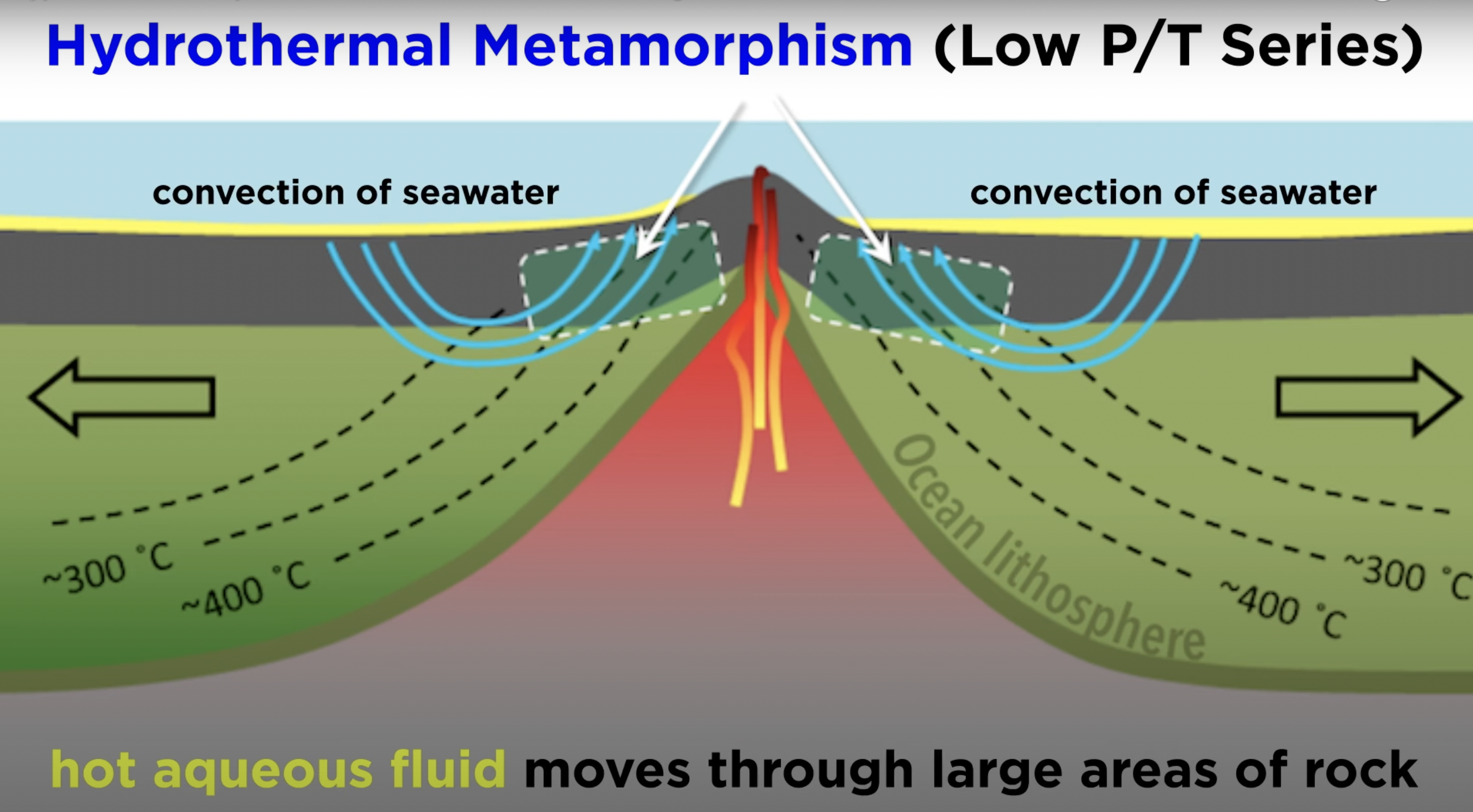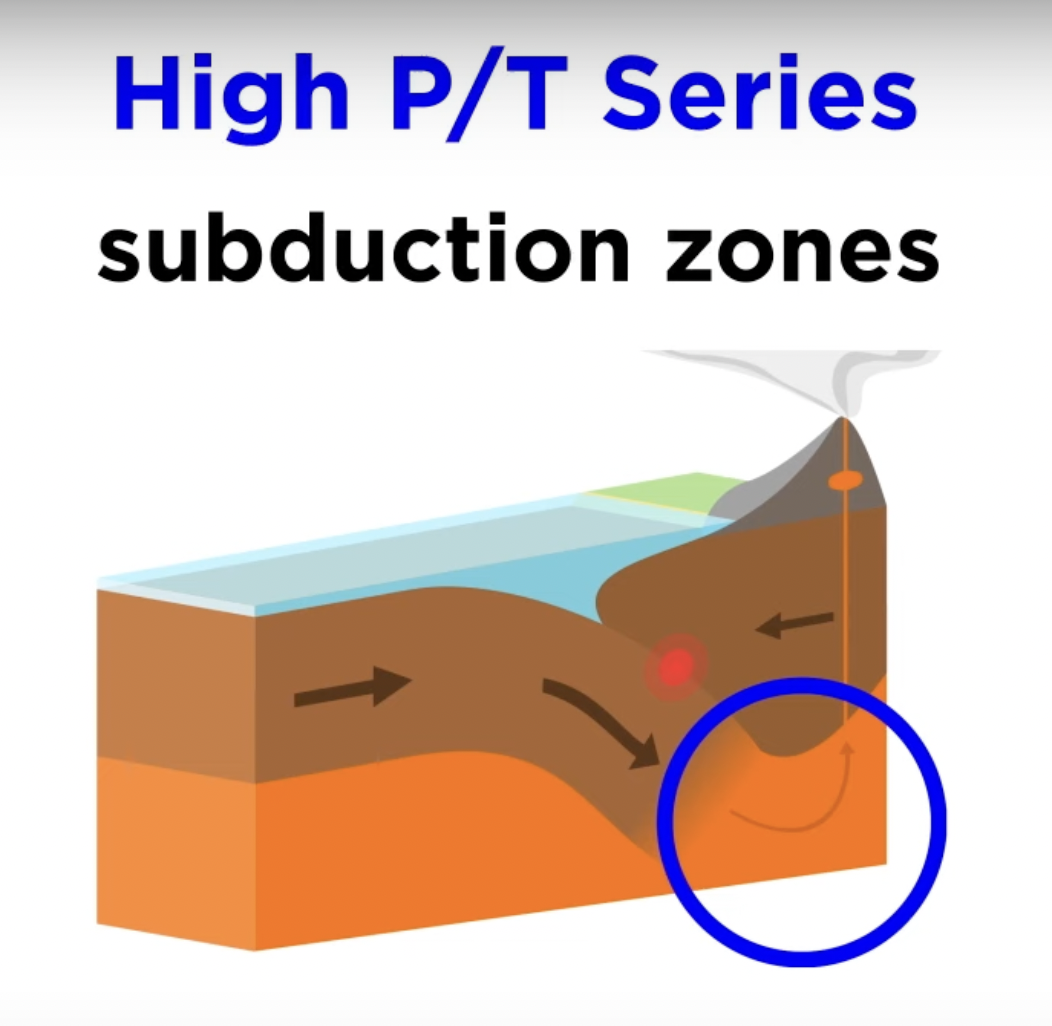metamorphism
1/26
There's no tags or description
Looks like no tags are added yet.
Name | Mastery | Learn | Test | Matching | Spaced |
|---|
No study sessions yet.
27 Terms
protolith
parent rock before metamorphism - main inference or interpretation based on the mineral assemblage of the metamorphic specimen
what are the 6 types of protoliths?
carbonates
quartzose
quartzofelspathic
pelitic
mafic
ultramafic
**can people maybe understand quartzose and quartzofelspathics?
carbonates
minerals: calcite, dolomite
elements: Ca, Mg, C, O
paleoenvironment: shallow, warm, marine, carbonate compensation depth (below this, calcite dissolves in colder water)
quartzose
minerals: qtz
elements: Si, Fe-oxides
paleoenvironment: beach, passive margin or inland seaway
quartzofeldspathic
minerals: qtz, k-spar, plag
elements: Si, Fe, Al, Na, K
paleoenvironment: continental arc, convergent boundaries (high Mg = high T, high Fe = low T)
pelitic
minerals: shale-rich parent (clay minerals)
elements: SiO2, Al, Mg, Fe, OH, Na, K
paleoenvironment: deep, still water (off continental shelf, glacial lakes)
mafic
minerals: Ol, Cpx, Opx, Pl
elements: Mg, Fe, Ca, SiO2
ultramafic
minerals: Ol, Pl, Cpx, Opx
elements: Mg, Ca, Al, Fe (lower in Si than everything except carbonates!)
what helps us to diagnose the protolith?
assemblage of minerals! AND P/T conditions, timing, fluid flux
the protolith becomes a metamorphic rock that now consists of…
a change in composition
different mineral assemblage
new or old minerals have new orientations
contact metamorphism
high T but no change in P, recrystallization
regional metamorphism
orogeny, directed P (strain and shear)
shock metamorphism
bolide impact (high P reached)
hydrothermal metm.
change in fluid present, development of clays, economic minerals
burial metm.
low grade T, directed P
what is the metm. facies diagram used for
linking rock type to formation environment… only used for metabasites
metabasites
start with a basalt (3000 kg/m³)
what are relict minerals?
minerals from protolith that have survived metm. event (can have a changed shape), while others from original rock have changed
what mineral do metm. rocks often have?
amphiboles!! which vary (appear in different facies) depending on PT conditions
what happens in retrograde metm.?
overprint lower grade minerals begin to replace or surround higher grade ones as P/T conditions lower
EX: rxn rims (observation) tell us there’s been >1 metm. event (interp.)
EX: if you see both high and low grade minerals, the high grade likely formed first and then transitioned to lower grade as metm. grade lowered… or maybe a relict mineral from a lower grade is still present if the metm. grade isn’t too high for it to have survived
when is the only time we can use the metm. facies diagram?
if we can identify the stable mineral assemblage for metabasites
petrogenetic grid for metabasites
shows rxns whose P-T conditions were experimentally determined
rxn boundaries match up with boundaries in metm. facies diagram/different minerals on either side of rxn line show changing PT conditions… “Chl out” moves you into amphibolite facies
how was the metm. facies diagram made?
in the field… general relationships! linking rock type to formation environment
dehydrating = ?
hydrating = ?
dehydrating = prograde
hydrating = retrograde
what is a type of low P/T metm?

what is a medium P/T metm. event?
orogenic events!
where does high P/T metm. occur?
